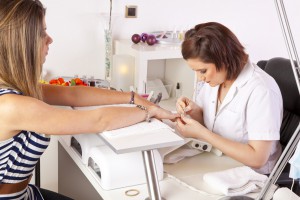Protecting Nail Salon Workers
Posted on byLast week, the New York Times published a two-part series highlighting what it characterized as exploitative employment practices and unsafe working conditions for nail salon workers, including exposures to hazardous chemicals. On the heels of the reports, New York Governor Andrew M. Cuomo on May 11 ordered emergency measures in the state “to prevent unlawful practices and unsafe working conditions in the nail salon industry.”
Recognizing and controlling occupational hazards are important steps to protect this vulnerable working population. Census data show there are 17,000 nail salons in the U.S. Approximately 350,000 people are employed in nail salons and other personal care services in the United States according to industry estimates (Nails Magazine, 2008–2009). These estimates indicate the workforce is largely female (96%) with the industry employing a large number of minority workers (63%).
For more than a decade, the National Institute for Occupational Safety and Health (NIOSH) has conducted research and made recommendations on hazards faced by nail technicians. Nail salon employees are potentially exposed to dozens of chemicals including acrylates and solvents. A small but growing number of studies have examined possible links between nail technicians’ work and health outcomes, such as respiratory, neurological, and musculoskeletal effects, as well as other health conditions. Much of the NIOSH-sponsored research to-date has focused on the respiratory system particularly controlling for allergenic effect of ethyl methacrylates. Other hazards include musculoskeletal disorders, skin problems and headaches.
While research progresses for better documenting, understanding, and predicting such risks, NIOSH has worked with partners to assess and recommend practices for controlling exposures. The NIOSH publication Controlling Chemical Hazards During the Application of Artificial Fingernails describes simple measures to reduce occupational exposures during artificial nail application, such as keeping dispensers closed and wearing long sleeves and gloves to protect skin from potential irritants and sensitizers. NIOSH has also conducted and reported the results of laboratory studies on the effectiveness of exhaust ventilation systems for preventing chemical exposures. Additional information including current research is available on the Nail Technicians’ Health and Workplace Exposure Control website. The NIOSH blog, Hypertension and Low Wages may also be of interest.
We would like some feedback from you on these issues. How has your salon reduced exposures? What are your ideas for reducing exposures in nail salons?
Cheryl Fairfield Estill, MS, PE
CAPT Estill is an Industrial Hygiene Supervisor in the NIOSH Division of Surveillance, Hazard Evaluations, and Field Studies.
Posted on by


